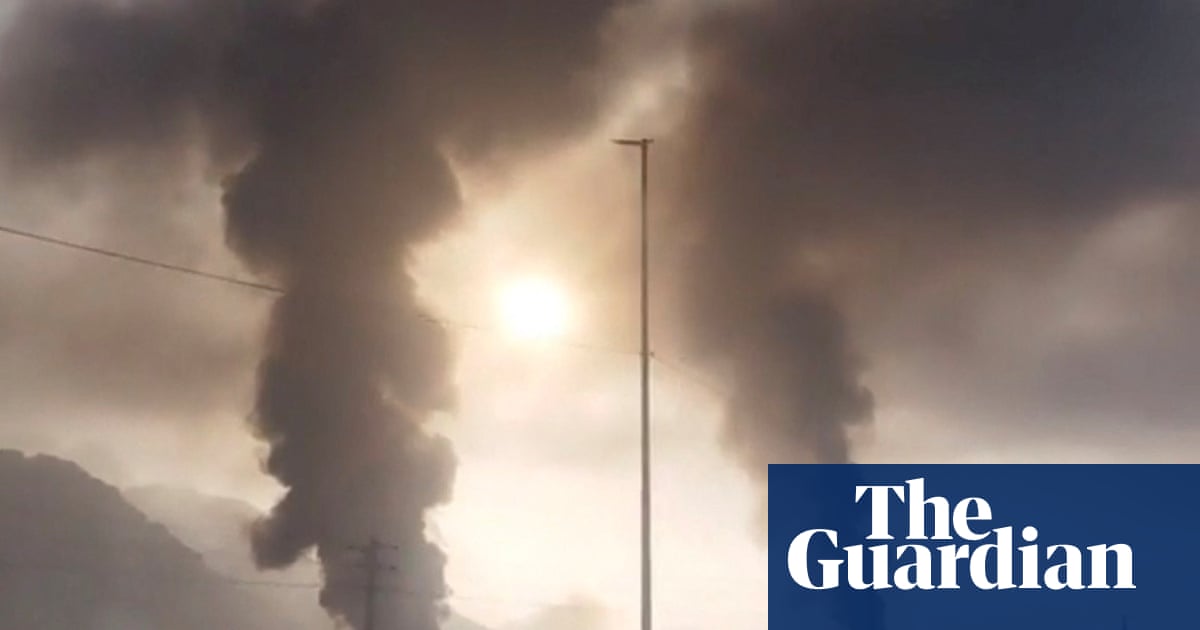Israel’s assault on Iran demonstrates a ruthless combination of air power and intelligence – and a significant disparity between the two countries in a conflict that is likely to be a long one if the goal is to eliminate Tehran’s nuclear capability.
Israel’s air forceundertook waves of airstrikes, beginning at about 3am on Friday, aimed, briefings indicated, first at Iran’s military leaders and intelligence in Tehran, then switching to air defence batteries, missile launch sites and, above all, the critical facility at Natanz where uranium can be enriched to weapons grade.
The initial goal appears to have been to smash Iran’s military chain of command, with the killing of Maj Gen Mohammad Bagheri, the chief of staff of Iran’s military – and Gen Hossein Salami, the head of the Islamic Revolutionary Guards Corps, killed alongside other senior members of the group.
Burcu Ozcelik, a research fellow at the Royal United Services Institute (Rusi), said the sheer scale of the attack “risks reshaping the strategic landscape of the Middle East” by targeting its military leadership and nuclear infrastructure.
“The sheer depth and precision of the strikes – reaching into the heart of Tehran and eliminating key figures such as Salami – underscore the extent of Israeli intelligence penetration and the degraded state of Iran’s air defence systems. For Tehran, this is not only a tactical loss but a profound strategic humiliation,” she added.
The immediate question is how much damage was done at Natanz, where Iran has conducted most of its nuclear enrichment at a site thought to be 8 metres underground, largely protected by reinforced concrete and hard rock. Videos showed black plumes emerging from the area of the site, but damage is impossible to assess.
Iran said the Natanz site had been hit, but there were no casualties, according to the semi-official Mehr news agency, while the International Atomic Energy Agency said it was still assessing the damage. Meanwhile, Israel’s military spokesperson, Effie Defrin, said the bombing had struck the underground area and related critical infrastructure. “We inflicted significant damage on this site,” he added.
At the same time, Israel’s external security service, the Mossad, claimed it had conducted a mixture of commando attacks, complete withgrainy thermal video, and strikes from prepositioned drones – in the style of Ukraine’s recent attack on Russian airbases – aimed at Iranian air defence systems, including at Esfejabad airbase.
Some of the Mossad claims are likely to be propagandistic but the military reality is that so far there has been no sign of effective Iranian air defence or any reports of Israeli air force casualties. Israel appears to have a near total air superiority, allowing it to continue bombing into Friday with fresh attacks on Tabriz.
Iran’s initial response, Israel said, was to launch more than 100 drones at its attacker, all of which were shot down by mid morning. The drones are slow-moving, taking up to seven hours to travel the 700 miles or so between the countries – and it would take a far larger wave before even a handful hit the ground.
Tehran does have other military options, however. The most immediately dangerous is a store of up to 3,000 high-speed ballistic missiles, of which it used about 180 in its last attack on Israel in October 2024.Two dozen or sohit the Nevatim and Tel Nof airbases (where nuclear weapons are thought to be stored) in Israel and locations near the Mossad headquarters, but the damage done appears to have been relatively modest.
Sign up toGlobal Dispatch
Get a different world view with a roundup of the best news, features and pictures, curated by our global development team
after newsletter promotion
Initial reports suggested that Kermanshah in western Iran, home to ballistic missile launch sites buried inside canyons, was one of the early sites targeted. Successfully destroying or disabling underground sites is notoriously difficult, however, and the true impact will emerge only if Iran launches a missile counterattack with whatever is left at its military’s disposal.
Alternative possibilities may be cyber or terror attacks, though on a political level neither might feel like an equivalent retaliatory response, even if they are achievable – while strikes on American targets would be very risky for Tehran, bringing with it the possibility that the US, with all its firepower, would join the war.
But the option that is not on the table is to rely on traditional regional proxies. On Friday, Lebanon’s Hezbollah, its leadership eliminated during the two-month war with Israel last autumn, said it “will not initiate its own attack on Israel” in support of Iran. Yemen’s Houthis,attacked by Israel on Tuesday, are more than 1,000 miles distant and have only the ability to mount occasional ballistic missile attacks.
The complication for Israel is that Iran has had a long time to prepare, and its nuclear facilities are well defended.Until Friday afternoon, Israel did not try to attack a second enrichment facility at Fordow, buried 80-90 metres underground, beyond the capabilities of its most powerful known missiles, the 1.8-tonne Rocks and 1.6-tonne Air Lora.
Successfully attacking Natanz,according to an analysisfrom Rusi, “would likely require several impacts into the same crater to ‘burrow’ down to the facility and get a weapon through to explode within it successfully” – while the destruction of Fordow is considered feasible only with the US GBU 57/B “bunker buster” bomb, which, because it weighs nearly 14 tonnes and is 6 metres long,can be launched only from US B-2 bombers.
Such hardened targets, combined with Israel’s air dominance and extraordinary confidence, point to an extended military campaign against Iran – two weeks long, according to some reports – as well as a tense and uncertain international period, which, absent an Iranian capitulation, may not have an obvious end point.
